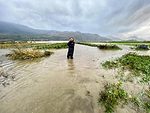Soil Health
[Podcast] V4-V5 is the Best Stage for Interseeding Covers Into Corn
This week’s podcast, sponsored by NewLeaf Symbiotics, features John Wallace, Assistant Professor, Weed Science, Penn State University. Wallace will discuss why interseeding might be better than fall cover crop establishment, cover crop establishment rates with interseeding, interseeding best management practices, and more.
Read More
[Podcast] Cotton is a Good Companion Crop for Corn & Soybeans
This week’s podcast, sponsored by NewLeaf Symbiotics, features Dennis Burns, AgCenter Agent and Research Coordinator with Louisiana State University. Burns will discuss why 60-inch cotton is gaining interest, an experiment with corn, soybeans, and cotton in a 60-inch bed, how adding cover crops to 60-inch cotton had an impact, and more.
Read More
[Podcast] Proper Soil pH an Important Factor for Crop Growth
This week’s podcast, sponsored by NewLeaf Symbiotics, features Daniel Kaiser, Nutrient Management Specialist, University of Minnesota Extension. Kaiser will discuss soil pH values for both corn and soybeans, the range of pH values for optimum crop performance, how growers can adjust their soil pH, and more.
Read More




